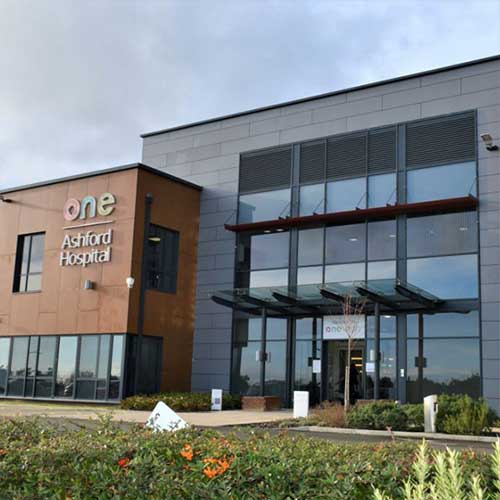Skin Biopsy
A skin biopsy is a procedure in which a skin lesion is cut and removed by a doctor for sample testing by a pathologist. The procedure is performed under local anaesthetic in either your local surgery or at a specialist dermatology clinic. Results are usually available within 7 working days.
Skin biopsies can help diagnose certain diseases such as skin cancer, infections or other skin conditions. There are four main types of skin biopsies which are performed, dependent on the suspected diagnosis of the skin lesion. Before your procedure, your dermatologist will provide you with the relevant information regarding your procedure, what will be involved, cosmetic outcomes and potential results.
Shave Biopsy
A shave biopsy is the most commonly used technique for obtaining skin biopsies as it can be performed quickly, requires minimal wound care with virtually no cosmetic scarring.
It is used for growths or abnormal areas that only affect the top or outer layers of the skin, i.e. the epidermis and outermost part of the dermis. It is carried out in order to diagnose the following:
- Types of non-melanoma skin cancer such as basal cell carcinoma (BCC) or squamous cell carcinoma (SCC)
- Non-cancerous (benign) skin growths or conditions such as seborrheic keratoses
- Pre-cancerous conditions of the skin such as actinic keratosis
In some instances, a shave biopsy is used as a complete treatment for the removal of a non-cancerous growth such as a skin tag or wart.
The procedure is carried out either at your local surgery or in a dermatologist’s clinic. A local anaesthetic is applied before a sharp blade is used to shave off the lesion. Once the biopsy is complete, the area is cauterised to stop bleeding. A bandage may be used to cover the wound, but you will not require any stitches. The procedures will take approximately 10 – 15 minutes and you will be able to return to your daily routine immediately.
Punch Biopsy
A punch biopsy is considered the primary technique for obtaining full-thickness skin specimens for diagnostic testing. It is a relatively low-risk procedure which involves the use of a circular blade attached to a pencil like handle. The instrument is then rotated down through the epidermis and dermis, through to the subcutaneous fat. The specimens obtained are sent for microscopic and histopathological examination, or bacterial and/or viral cultures.
Once the specimen has been obtained, the blade is withdrawn and pressure is applied to the area to reduce bleeding. The biopsy sample is then stored appropriately before further diagnostic testing can be carried out.
The procedure itself takes approximately 15 minutes and you will be able to return to normal daily life immediately.
Incisional Biopsy
An incisional biopsy involves making a small cut (incision) through the entire dermis down to the subcutaneous fat. It is similar to a punch biopsy, with the only difference being the use of an elliptical blade rather than a round one. This procedure allows the surgeon to remove a large piece of the lesion which is sent to laboratory for further examination. You are likely to require a few stitches after the procedure and will be left with a small scar which will eventually fade over time.
This type of biopsy is most commonly performed to help diagnose skin ulcers or diseases that involve tissue below the skin, particularly fatty tissue.
Excisional Biopsy
An excisional biopsy is basically the same as an incisional biopsy, except it is performed to remove the entire lesion or tumour. Your dermatologist will make an incision into your skin and go as deep as necessary in order to remove the entire lesion. It is the recommended method of diagnosis of small melanomas as it can be carried out safely with minimal cosmetic scarring.
Your surgeon will use a scalpel to remove the entire abnormal skin lesion, along with a small margin surrounding it. Once complete, you will likely require several stitches to close the wound. Pressure will be applied to the site until the bleeding stops. The site will then be covered with a bandage and sterile dressing to promote healing. You will be required to keep the area dry for a few days, but will be fine to return to your normal daily routine immediately.
If you have noticed a concerning rash or lesion on your skin, book an appointment to see your GP immediately where you will be referred to see a specialist dermatologist for further diagnostic tests. After checking the area, you may be referred for one of the above skin biopsies.
You can use your private medical insurance or pay for your Skin Biopsy treatment. We offer competitive, fixed price packages. If you are using your health insurance, please contact your insurer first for approval and let them know you’d like to be treated at One Ashford Hospital
Why One Ashford Hospital
- Access to leading Consultants within 48 hours*
- Competitive fixed-price packages
- Modern purpose-built hospital
- Private, spacious, ensuite rooms
- Specialist Physiotherapy and nursing teams
- Little waiting time for surgery
- Calm, dignified experience
*Dependent on Consultant availability
**Terms and conditions apply



 One Ashford
One Ashford One Hatfield
One Hatfield